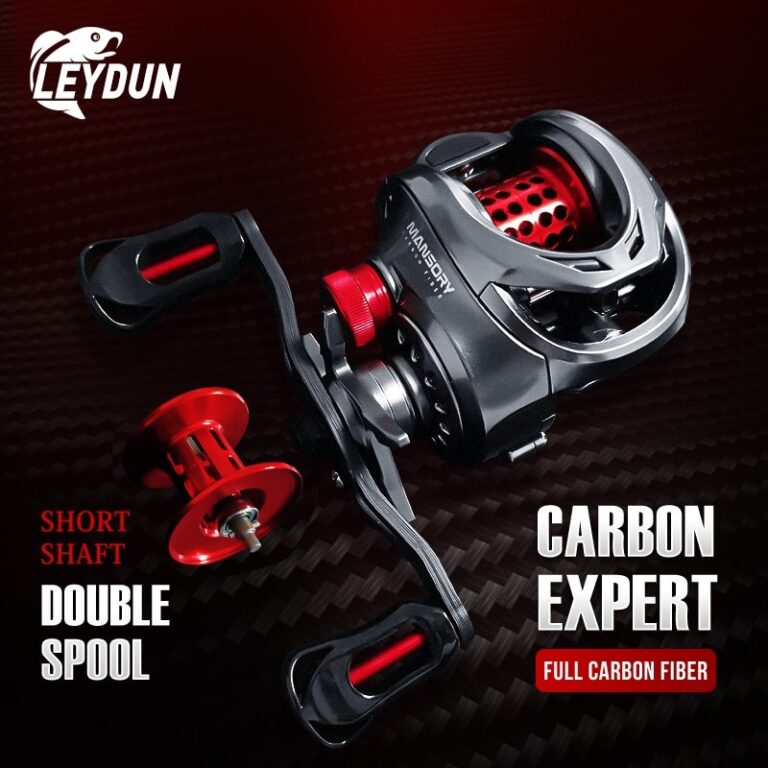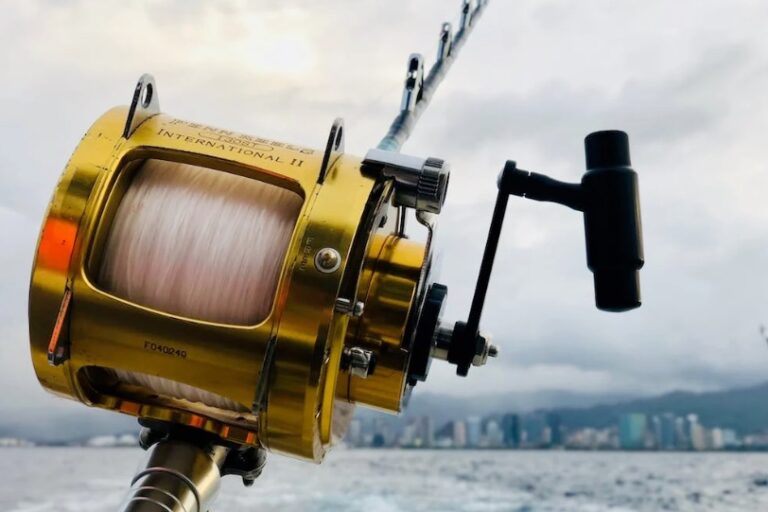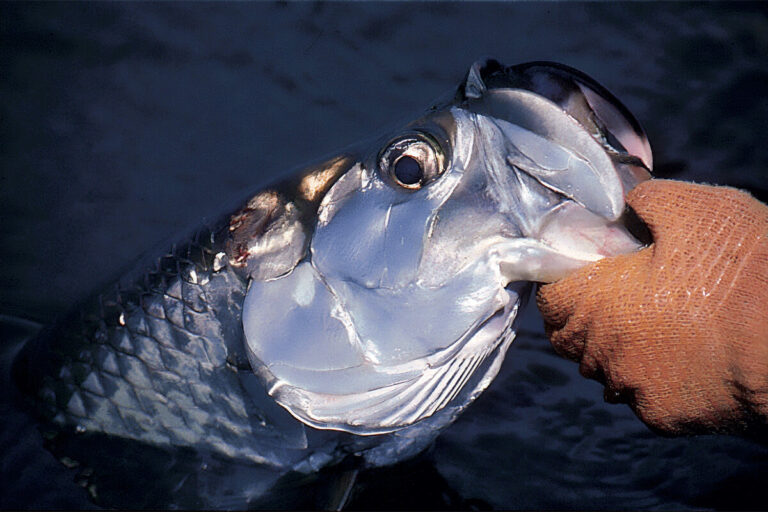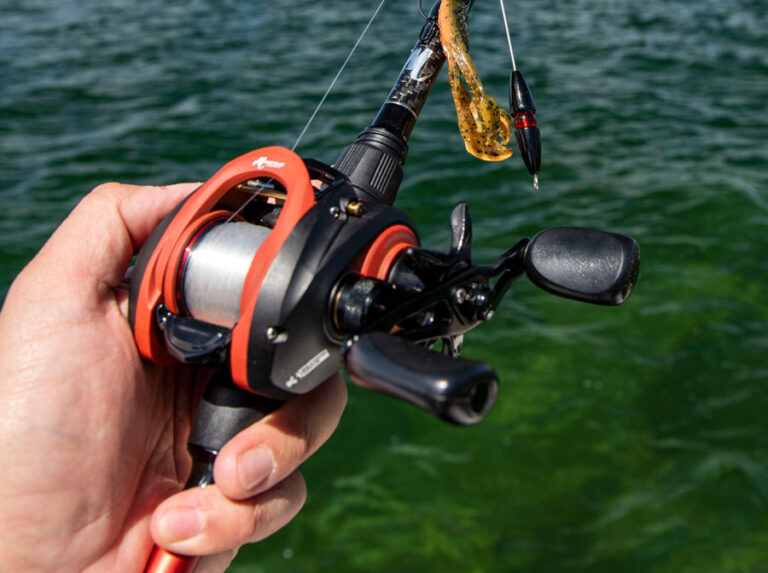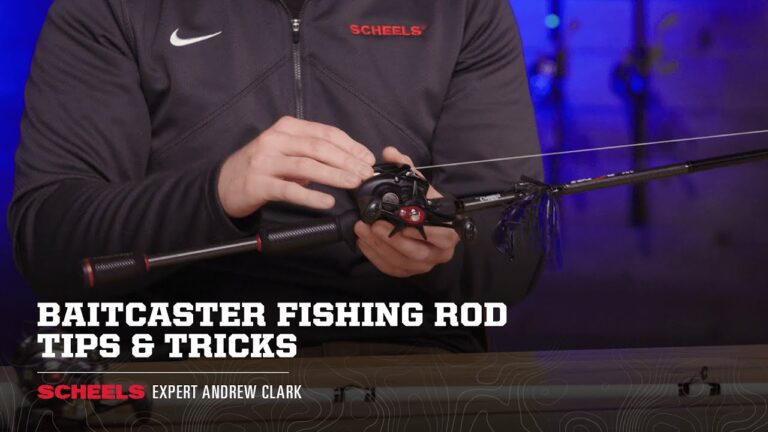Braided line works well on a baitcaster, providing increased sensitivity and strength for casting and reeling in fish. It allows for longer and more accurate casts, and its low stretch properties enhance hooksets.
Additionally, braided line is less prone to wind knots and offers improved abrasion resistance, making it suitable for fishing in heavy cover and around structure. It is important to adjust the reel’s braking system and use proper line tension to avoid backlash when using braided line on a baitcaster.
Mastering the technique of casting with braided line on a baitcaster can greatly enhance an angler’s fishing experience. So, whether you are targeting freshwater or saltwater species, consider using braided line on your baitcaster for optimal performance.
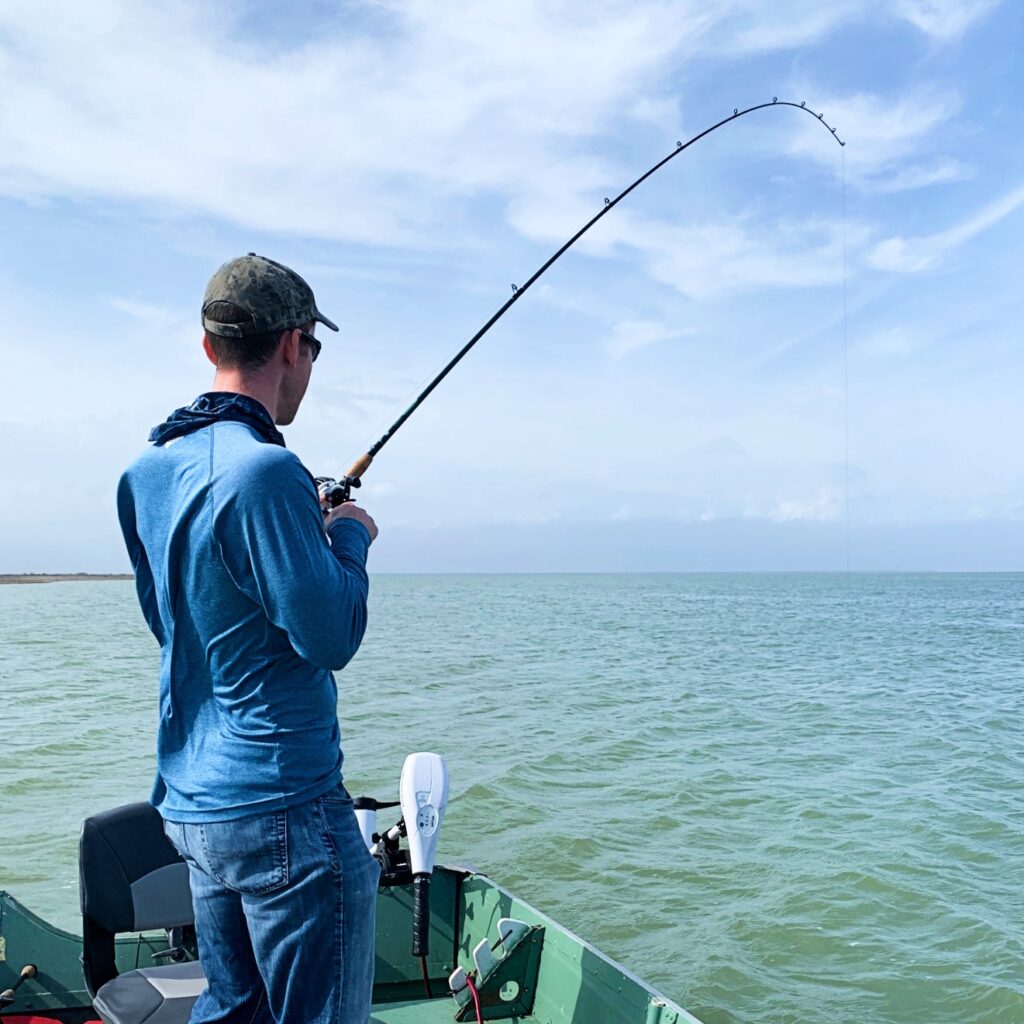
Credit: juranadventures.com
Understanding Braided Fishing Line
Braided fishing line has become increasingly popular among anglers for its remarkable strength and durability. Made from intertwining strands of synthetic fibers like spectra, dacron, or dyneema, braided line boasts enhanced performance and reliability compared to traditional monofilament or fluorocarbon lines.
Understanding the unique characteristics and benefits of braided line is essential for any angler seeking to make the most out of their fishing experience.
What Is Braided Fishing Line?
Braided fishing line is composed of multiple strands of synthetic fibers, tightly woven together to create a strong and durable fishing line. Unlike monofilament or fluorocarbon lines, braided line is not made from a single thread, but rather from a combination of fibers.
This construction gives braided line its distinctive appearance and unparalleled strength.
Key points:
- Braided fishing line is made from intertwining multiple strands of synthetic fibers.
- The composition of braided line sets it apart from monofilament or fluorocarbon lines.
The Composition And Construction Of Braided Line
Braided fishing line typically consists of anywhere from 4 to 8 strands, although some advanced braided lines can have more. The synthetic fibers used in braided line are inherently strong and resistant to abrasion, making them ideal for withstanding the rigors of fishing in various conditions.
This construction also gives braided line a smaller diameter compared to other lines of the same strength rating, enabling anglers to spool more line onto their reels.
Key points:
- Braided fishing line is composed of multiple strands of synthetic fibers.
- The number of strands can vary from 4 to 8 or more.
- The synthetic fibers used in braided line are strong and resistant to abrasion.
- Braided line has a smaller diameter compared to lines of similar strength.
Strengths And Weaknesses Of Braided Line
Like any fishing line, braided line has its strengths and weaknesses that anglers should be aware of. Understanding these aspects can help you determine whether braided line is the right choice for your specific fishing needs.
Strengths:
- Exceptional strength-to-diameter ratio, allowing you to use thinner line without sacrificing strength.
- High abrasion resistance, making it suitable for fishing in rough environments.
- Minimal stretch, providing increased sensitivity and better hook sets.
- Long-lasting durability, ensuring that braided line can withstand repeated use.
Weaknesses:
- High visibility underwater due to its bold and vibrant colors.
- Limited shock absorption, so anglers must be attentive to sudden strikes by powerful fish.
- Susceptibility to wind knots if not properly managed and maintained.
- Floating characteristic, making it less suitable for certain fishing applications such as deep water fishing.
Why Anglers Choose To Use Braided Line
Despite its weaknesses, many anglers still gravitate towards using braided fishing lines due to the numerous advantages they offer.
Reasons anglers choose braided line:
- Increased strength and durability compared to monofilament or fluorocarbon lines.
- Enhanced sensitivity, allowing anglers to detect even slight nibbles or movements from fish.
- Ability to cast farther due to its thin diameter and minimal line memory.
- Resilience in challenging fishing conditions, such as heavy cover or rough terrain.
- Versatility for targeting a wide range of fish species, from freshwater to saltwater.
By understanding the unique characteristics and benefits of braided line, anglers can make informed decisions on whether to incorporate this fishing line into their setup. With its increased strength, durability, and sensitivity, braided line can certainly enhance your fishing experience, helping you reel in those trophy catches.
So next time you head out to the water, consider giving braided fishing line a try and enjoy the advantages it brings to your angling pursuits.
Choosing The Right Line For Your Baitcaster
Factors To Consider When Selecting Fishing Line For A Baitcaster
Choosing the right fishing line for your baitcaster is crucial as it can greatly impact your fishing experience. Several factors should be taken into consideration when selecting the appropriate line for your baitcaster. Let’s explore some of these factors:
- Fishing conditions and target species:
- Consider the specific fishing conditions you will be facing, such as water clarity, vegetation, and structure. These factors can help determine the appropriate line strength and visibility.
- The target species will also play a role in line selection. For example, if you’re targeting larger fish that may put up a fight, opting for a more robust and durable line is advisable.
- Line weight and diameter:
- The line weight and diameter should match the capabilities of your baitcaster. Refer to the manufacturer’s recommendations for the appropriate line weight range your reel can handle.
- Thinner lines generally offer better sensitivity and casting distance, while heavier lines provide the strength needed to handle larger fish.
- Line visibility and color:
- The visibility of your fishing line is particularly important in clear water conditions. Opt for a line color that blends well with the surrounding environment to minimize its visibility to fish.
- If you’re fishing in murky or stained water, a high-visibility line can help you detect subtle bites.
- Casting distance and accuracy:
- Some lines are better suited for long-distance casting, while others offer increased accuracy. Consider your fishing style and the type of water you’ll be fishing in when selecting your line.
- Lighter lines tend to cast farther but are more susceptible to wind and line twist, while heavier lines offer better accuracy and control.
Pros And Cons Of Using Braided Line On A Baitcaster
Using braided line on a baitcaster can have several advantages and disadvantages. Let’s take a look at the pros and cons:
Enhanced Strength And Sensitivity:
- Braided lines are known for their incredible strength, making them suitable for targeting larger and more aggressive fish.
- Their minimal stretch provides excellent sensitivity, allowing anglers to detect even the slightest nibbles or bites.
Increased Castability And Distance:
- Braided lines are thinner and offer less resistance in the water, resulting in longer casting distances.
- Their smaller diameter allows for more line to be spooled onto the reel, maximizing the distance you can cast.
Potential For Line Noise And Backlash:
- Braided lines can produce more noise as they run through the rod guides, potentially alerting fish to your presence.
- The lack of stretch in braided lines can also make them more susceptible to backlash, especially if not properly managed.
Selecting the right fishing line for your baitcaster involves considering factors such as the fishing conditions, target species, line weight, visibility, and casting requirements. While braided lines offer enhanced strength, sensitivity, and increased castability, they also come with the potential for line noise and backlash.
Assess your personal preferences and fishing style to choose the line that best suits your needs.
Tips And Techniques For Using Braided Line On A Baitcaster
Braided line can be a game-changer when fishing with a baitcaster. Its strength, sensitivity, and low stretch make it an ideal choice for a range of fishing situations. However, using braided line on a baitcaster requires some specific techniques and adjustments to ensure optimal performance.
In this section, we’ll look at some tips and techniques to help you get the most out of braided line on your baitcaster.
Properly Spooling Braided Line Onto A Baitcaster:
- Use a backing: To avoid line slippage, start by adding a monofilament or fluorocarbon backing to the spool before spooling on braided line. This will provide better grip and prevent the braided line from slipping on the spool.
- Overfill the spool: Unlike mono or fluorocarbon, braided line is thin and can dig into itself when under pressure. To prevent this, slightly overfill the spool to ensure there is enough tension on the line, reducing the risk of snaps or tangles.
Tips For Avoiding Line Slippage And Knots:
- Check the line tension: After spooling your baitcaster with braided line, give it a few casts and reel it back in under medium tension. This will allow the line to settle and prevent potential slipping or knot formation.
- Add tape to the spool arbor: Placing a piece of electrical tape or masking tape on the spool arbor can provide extra grip for the braided line, reducing slippage.
Setting Up The Baitcaster For Braided Line:
- Adjust the braking system: Braid has significantly less stretch compared to mono or fluorocarbon, so you’ll need to adjust the braking system to prevent backlashes. Start with a higher brake setting and gradually decrease it as you become more comfortable with casting the braid.
- Adjust the drag: Braid’s low stretch means you’ll directly feel the fish’s movements, so it’s important to set the drag right. Begin with a slightly looser drag setting than usual to account for the line’s sensitivity and power.
Fishing Techniques For Maximizing The Effectiveness Of Braided Line On A Baitcaster:
- Pitching and flipping: Braided line excels in close-quarters fishing, making it perfect for pitching and flipping techniques. Its sensitivity allows you to detect subtle bites, and its strength gives you the power to haul in fish from heavy cover.
- Topwater fishing: The low stretch of braided line is beneficial when fishing with topwater lures, as it allows for quick hook sets and improved lure control. You can feel every twitch and movement of your lure, resulting in better presentation and increased chances of enticing a strike.
- Deepwater fishing: When fishing in deep water, braided line’s thin diameter makes it easier to cut through the water and reach greater depths quickly. It’s also more resistant to abrasion, reducing the risk of line breakage around rocks or submerged structures.
Common Challenges And How To Overcome Them:
- Managing line visibility: Braided line is often more visible in the water compared to mono or fluorocarbon. To reduce its visibility, consider using a fluorocarbon leader between the braid and the lure. This will make your setup less conspicuous, increasing your chances of getting a bite.
- Preventing line tangles and backlash: Baitcasters can be prone to backlash when using braided line. To minimize the risk, ensure your reel’s spool tension and braking system are properly adjusted. Practice smooth and controlled casting motions to avoid sudden line overruns and tangles.
- Handling stronger and more aggressive fish: Since braided line has little to no stretch, it’s important to have a solid hookset and maintain constant pressure on the fish throughout the fight. Ensure your drag is properly set and use appropriate rod and line strengths to handle the power of these fish.
By following these tips and techniques, you’ll be well-equipped to handle the unique characteristics of braided line on a baitcaster. Experiment with different setups and techniques to find what works best for you in various fishing scenarios. With practice, you’ll quickly discover the advantages of using braided line on your baitcaster and improve your overall fishing success.
Conclusion
To sum up, using braided line on a baitcaster can be highly advantageous for various fishing applications. The exceptional strength, low stretch, and thin diameter of braided line make it ideal for casting long distances, feeling even the subtlest strikes, and hauling in big fish.
Additionally, its high abrasion resistance ensures it can withstand tough conditions and sharp objects in the water. However, it’s important to consider the potential downsides, such as the line’s visibility in clear water and its tendency to dig into the spool.
Nonetheless, these issues can be mitigated through proper line management and the use of a monofilament or fluorocarbon leader. Ultimately, the decision to use braided line on a baitcaster comes down to personal preference and specific fishing needs. Remember, experimenting and finding what works best for you is key when it comes to maximizing your angling success.

